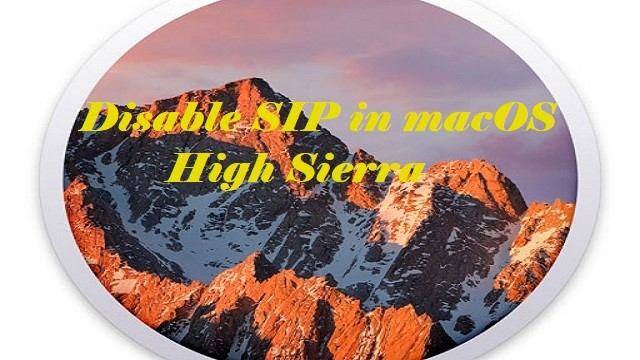Well, disabling Mac’s security feature is not something to be considered as lightly!
As a security feature, Apple introduced System Integrity Protection (SIP) mode for its macOS. It is a well-known feature in macOS 10.12 Sierra and macOS 10.13 High Sierra that protects files, directories, and processes at the root level from being modified. By protecting access to system locations and restricting runtime attachment to system processes, this security policy guard against compromise, whether accidental or by malicious code.
Further, macOS applies this security policy to every process running on the system, regardless of whether it’s running with administrative privileges or something else. System Integrity Protection is activated by default but can be easily disabled.
In case you may be required to temporarily disable SIP during application development in order to install and test the code. To launch and debug programs from Xcode, you don’t need to disable SIP, but you may need to disable it to install system extensions.
So if you are willing to turn off System Integrity Protection (SIP) on your Mac computer, then stick to this article till the end.
Is it safe to disable System Integrity Protection on Mac?
Even though you have the choice to enable or disable SIP as needed, Apple suggests that you keep it enabled all of the time for greater security. Remember that turning off SIP can expose your system to major security risks.
If you want to disable SIP, be sure that any third-party software you install comes from a reputable source before installing it.
Also, make a Time Machine backup of your device just in case something goes wrong; this will save you from losing all of your data.
If you forget to make a backup, you can recover data from your device with Remo Recover Mac program. In a variety of data loss scenarios, this Mac data recovery tool can safely recover your lost data. Corruption, unintentional deletion, empty Trash, formatted discs, and a variety of other issues are just a few examples.
How to Turn Off SIP(System Integrity Protection) on Mac?
Removing SIP is something of a hassle because you need to restart your Mac in Recovery Mode. Make sure that you re-enable SIP as soon as you’ve finished with whatever task it was interfering with. It forms a vital part of OS X’s security system.
To turn off System Integrity Protection on Mac follow the steps below:
- First click the Apple symbol in the Menu bar.
- Then click on the Restart button, by holding down the Command-R button reboot the Mac into Recovery Mode.
- Now click Utilities > then select Terminal.
- In the Terminal window, type csrutil disable.
- Press Return on your keyboard, and click the Apple symbol in the Menu bar.
Finally, Restart the Mac computer again. Now your SIP would have become disabled.
How to Check If System Integrity Protection is Disabled or Enabled?
In case you want to check the status of System Integrity Protection, follow the steps below Go to Terminal > in the Terminal window type csrutil status > now hit the Return button.
Now you will see if the System Integrity Protection is enabled or disabled like: System Integrity Protection status: disabled.
How to Enable the SIP on Mac?
- Turn off your Mac hold down Command-R and wait for Mac to boot into Recovery Mode.
- Go to Utilities > click on the Terminal.
- In the Terminal window, enter csrutil enable.
- Reboot your Mac machine.
Now open Terminal and enter csrutil status to check the status of SIP. It should say System Integrity Protection status: enabled.
Note: Follow the above steps to turn off the SIP on macOS High Sierra/ Sierra or any other versions
For some power users, SIP can be a major headache as it prevents all kinds of software from being installed and doesn’t let you work outside your home directory even if using “Sudo” at the command line, or when logged in as the “root” user. But if you don’t know what “Sudo” or the “root” user is then you may stop right here! However, SIP exists for good reason, and most users are infinitely advantageous with it enabled.
Features that SIP Enforces on the Mac Machine When Enabled
- Only the system processes connected with Apple’s codesign have the authority to write or change files in the following folders as a result of this enforcement: /bin, /sbin, /usr, /system.
- This safeguards Mac against tampering since the kernel rejects any attempt to alter a protected process. It functions as a gatekeeper, ensuring that only trusted software is installed on a Mac.
- Developer IDs are used to sign kernel extensions certificates, which are stored in the /Library/Extensions directory.
Note: “If you have recently upgraded to macOS High Sierra and lost any data during that process, then you can make use of Remo Recover Mac Software to get back lost files in simple steps.”
